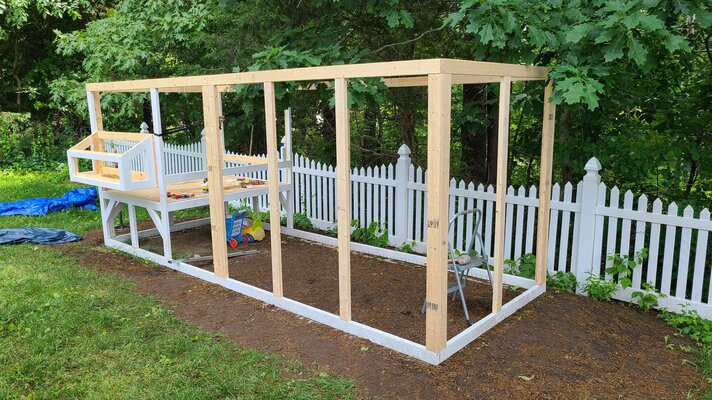Dreammaker
Songster
Hello!
First time poster here. My husband and I are from MA and are about to embark on our chicken-keeping journey. He is constructing a beautiful coop modeled after Carolina Coops. The coop is 6x5 and the attached run is 6x16 (which includes the portion that's under the coop, which is raised about 2' up). We are planning to have somewhere in the range of 6-8 birds (standard size). The coop and run should be ready to go probably in September, maybe October at the latest? This brings me to our dilemma...
Should we go with started pullets in the fall or wait until spring and raise baby chicks? I have 3 small kids, so TBH, I'm a little intimidated about the prospect of raising chicks. It seems like a lot of work. I am also really excited and impatient and want birds and eggs ASAP. I originally planned on pullets and if, down the road, we are doing great with chickens, attempt raising chicks. Again, we are in MA, so I am wondering if pullets would be able to adjust to the cold if we got them in September/October. I am assuming the pullets would be around 16-20 weeks. Really just depends on where I purchase them (online hatchery? local farm/breeder?). Of course, we'd choose cold-hardy breeds bred to handle our climate.
Thank you!
First time poster here. My husband and I are from MA and are about to embark on our chicken-keeping journey. He is constructing a beautiful coop modeled after Carolina Coops. The coop is 6x5 and the attached run is 6x16 (which includes the portion that's under the coop, which is raised about 2' up). We are planning to have somewhere in the range of 6-8 birds (standard size). The coop and run should be ready to go probably in September, maybe October at the latest? This brings me to our dilemma...
Should we go with started pullets in the fall or wait until spring and raise baby chicks? I have 3 small kids, so TBH, I'm a little intimidated about the prospect of raising chicks. It seems like a lot of work. I am also really excited and impatient and want birds and eggs ASAP. I originally planned on pullets and if, down the road, we are doing great with chickens, attempt raising chicks. Again, we are in MA, so I am wondering if pullets would be able to adjust to the cold if we got them in September/October. I am assuming the pullets would be around 16-20 weeks. Really just depends on where I purchase them (online hatchery? local farm/breeder?). Of course, we'd choose cold-hardy breeds bred to handle our climate.
Thank you!






